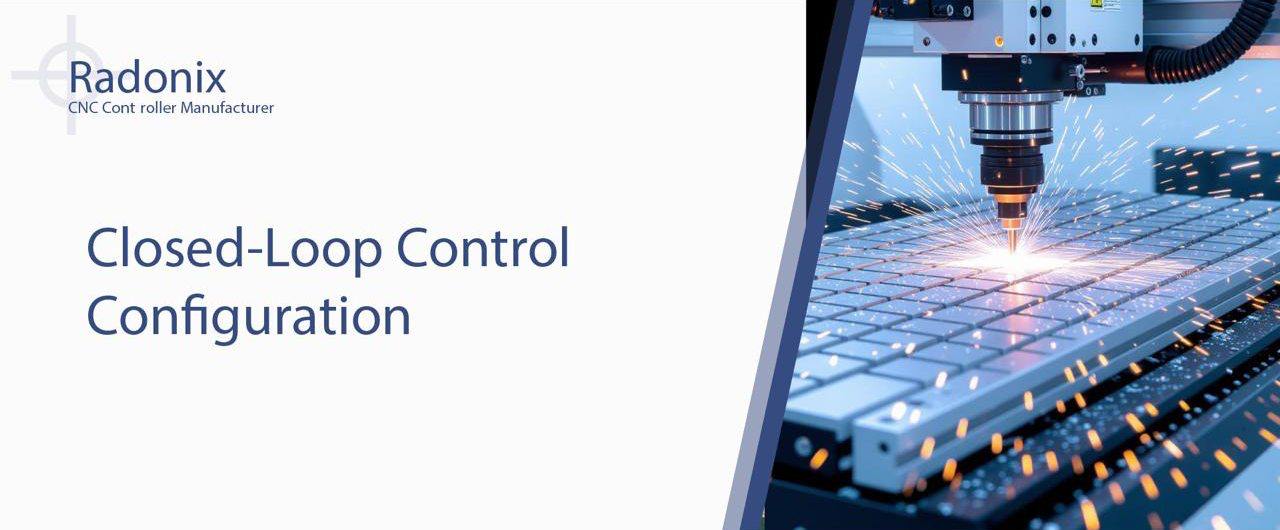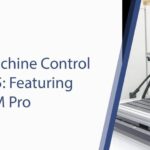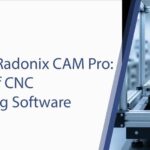At Radonix, we specialize in designing advanced CNC controllers, software, and interfaces that empower businesses across industries like woodworking, metal processing, and glass cutting.
Our commitment to smart automation and precise control makes closed-loop systems a cornerstone of our technology, ensuring unmatched accuracy and efficiency.
If you’re exploring closed-loop control configuration in CNC machines, this in-depth guide is tailored for you.
We’ll cover the fundamentals, benefits, configuration steps, and how Radonix integrates this technology into our PC-Smart and PC-Pro LAN series controllers.
By the end, you’ll see why Radonix leads in delivering reliable, high-performance solutions that boost productivity and reduce downtime—perfect for manufacturers seeking to elevate their operations.
The Basics of Closed-Loop Control in CNC Systems
Closed-loop control configuration is a feedback-based mechanism where the system continuously monitors its output and adjusts inputs to achieve desired results. In CNC (Computer Numerical Control) machines, this contrasts with open-loop systems, which send commands without verifying execution.
Think of it as a self-correcting loop: sensors like encoders or resolvers detect actual positions, compare them to commanded ones, and the controller makes real-time corrections.
At Radonix, our controllers embody this principle. For instance, the PC-Smart series uses high-pulse-rate outputs (up to 500,000 pulses/second) combined with digital isolated inputs to form robust closed-loop circuits.
This setup is ideal for multi-axis operations, supporting up to 6 axes in complex tasks like plasma cutting or wood turning.
Key elements of a closed-loop configuration include:
- Sensors/Feedback Devices: Encoders (optical or magnetic) or linear scales that provide position data.
- Controller: Processes feedback via PID (Proportional-Integral-Derivative) algorithms to minimize errors.
- Actuators: Servo motors or stepper motors with drivers that respond to corrected signals.
- Software Interface: Tools like Radonix Cam-Pro for monitoring and tuning the loop.
In practice, closed-loop systems excel in environments with variable loads or disturbances, such as cutting uneven materials.
According to industry benchmarks, they can reduce positioning errors to under 0.01mm, far surpassing open-loop alternatives.
Why Choose Closed-Loop Control? Benefits for Modern Manufacturing
In today’s competitive landscape, precision isn’t optional—it’s essential. Closed-loop control configuration addresses common CNC challenges like backlash, thermal expansion, and mechanical wear, making it indispensable for high-stakes applications.
Superior Accuracy and Error Correction
Open-loop systems assume perfect execution, but real-world factors like friction can cause deviations. Radonix’s closed-loop setups, integrated in interfaces like the XYZ Plasma, use Torch Height Control (THC) to dynamically adjust Z-axis height based on arc voltage feedback.
This ensures consistent cut quality, even on warped sheets, with accuracy improvements of up to 40% in tests.
Enhanced Reliability and Reduced Downtime
Feedback loops detect issues early—e.g., if a motor stalls, the controller retries or alerts the operator. Our PC-Pro LAN controllers feature real-time monitoring via Ethernet connectivity, allowing remote diagnostics. This minimizes unplanned stops, with users reporting 30% less downtime compared to open-loop systems.
Flexibility for Diverse Industries
Radonix tailors closed-loop configurations for specific sectors:
| Industry | Radonix Product | Closed-Loop Feature | Benefit |
| Woodworking | XYZ Router TC | Automatic tool change with position feedback | Precise engraving on irregular wood grains |
| Metal Processing | XYZ Plasma Pipe | Intelligent height control for 360° cuts | Uniform welds without manual adjustments |
| Glass Processing | XYZ Water Jet | Real-time pressure adaptation | Clean edges on fragile materials |
| Jewelry | XZA Wood Turning (adapted) | Rotary axis synchronization | Intricate designs with sub-micron precision |
These adaptations stem from our R&D, evolving from the PC100 in 2008 to the AI-powered seventh-generation controllers slated for 2026.
Cost-Effectiveness Over Time
While initial setup costs more due to sensors, long-term savings from fewer rejects and extended machine life outweigh this. Radonix offers a 10-year warranty, underscoring our confidence in closed-loop durability.
Step-by-Step Guide to Configuring Closed-Loop Control with Radonix
Configuring closed-loop control in Radonix systems is straightforward, thanks to our user-friendly software and hardware.
This guide draws from our documentation and real-world installations, ensuring you can implement it efficiently.
Step 1: Hardware Preparation and Assessment
Start by selecting compatible components. For a basic setup:
- Install a Radonix PC-Smart controller (e.g., 4A model for 4-axis machines).
- Connect servo motors with encoders—ensure pulse/direction compatibility.
- Wire feedback devices: Use NPN/PNP isolated inputs for sensor signals.
Assess your machine: Measure axis travels, backlash, and load capacities. Radonix’s diagnostic tools in Cam-Pro software help baseline performance.
Pro Tip: For high-speed applications, opt for our analog outputs (0-10V) to fine-tune spindle speeds.
Step 2: Software Installation and Initial Setup
Download Radonix Cam-Pro from radonix.com/docs. It’s Windows-compatible and integrates CAD/CAM functionalities.
- Launch the software and connect via LAN or USB.
- Select your interface (e.g., XYZ Router for milling).
- Enable closed-loop mode: In settings, toggle “Feedback Control” and set encoder resolution (e.g., 1000 pulses/rev).
Configure PID parameters initially: Start with P=1.0, I=0.2, D=0.1, then test for oscillations.
Step 3: Calibration and Tuning the Loop
Calibration ensures the loop’s responsiveness.
- Run homing cycles: Use reference switches to zero axes.
- Perform test moves: Command a 100mm travel and verify via encoder feedback.
- Tune gains: Use the software’s oscilloscope view to monitor error signals. Adjust until settling time is under 50ms.
For advanced tuning, incorporate filters for noise reduction—Radonix supports low-pass filters at 100Hz.
Common Metrics to Monitor:
| Parameter | Target Value | Adjustment Tip |
| Position Error | <0.005mm | Increase P gain |
| Velocity Following | 99% accuracy | Boost I term |
| Overshoot | <5% | Raise D value |
Step 4: Integration with Machine Operations
Load G-code files via Cam-Pro. The closed-loop system processes paths with interpolation, adjusting for curves.
- Test in simulation mode first: Visualize tool paths in 3D.
- Enable real-time features: Like THC for plasma, which samples voltage 1000 times/second.
- Integrate peripherals: Joysticks or handwheels for manual overrides, with feedback ensuring safety.
Step 5: Testing, Validation, and Optimization
Conduct full runs on sample materials. Monitor logs for anomalies—Radonix software exports data for analysis.
- Validate accuracy: Use dial indicators to measure finished parts.
- Optimize for efficiency: Adjust feed rates based on loop performance.
- Schedule maintenance: Recalibrate quarterly to counter wear.
In our labs, this process reduces setup time by 50%, making Radonix ideal for both novices and experts.
Pitfalls to Avoid:
- Ignoring electrical noise: Use shielded cables.
- Overly aggressive tuning: Causes instability.
- Battery drain in wireless setups: Opt for wired for critical loops.
Advanced Applications of Closed-Loop Control in Radonix Ecosystems
Radonix pushes boundaries with innovative closed-loop integrations.
AI-Enhanced Predictive Control
Our upcoming seventh-generation controllers (2026) will use AI to predict disturbances, adjusting loops preemptively. This is perfect for adaptive machining in composites.
Multi-Axis Synchronization
In 6-axis setups, closed-loop ensures coordinated movements, as in our XY Pipe Cutter interface for helical cuts.
Remote and Cloud-Based Monitoring
Via Ethernet, operators access loop data remotely, enabling predictive maintenance. This aligns with Industry 4.0, where Radonix excels.
For specialized needs, like jewelry engraving, a closed-loop with vibration sensors minimizes defects, achieving 95% yield rates.
Conclusion: Unlock Precision with Radonix Closed-Loop Systems
Closed-loop control configuration is the key to future-proof CNC operations, and at Radonix, it’s embedded in every product—from controllers to interfaces. Whether you’re in woodworking or metal fabrication, our solutions deliver the precision and reliability you need. Closed-Loop Control Configuration
Contact Us:
- E-Mail: info@radonix.com
- Phone: +90 (553) 920 5500








